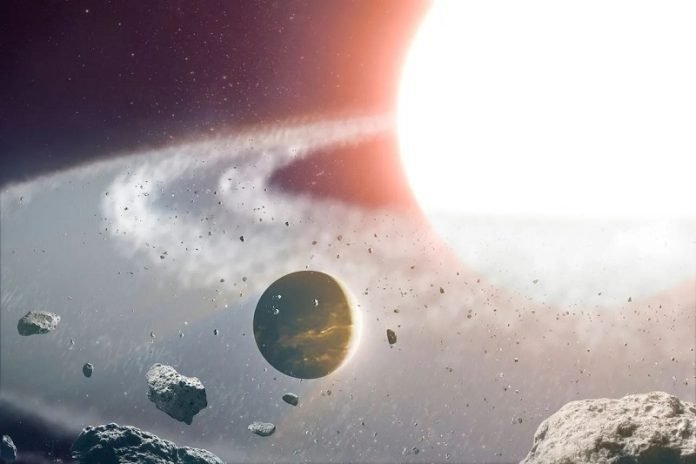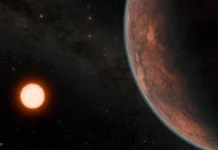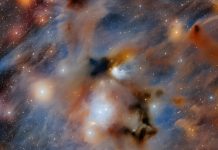
In a galaxy far, far away—530 light-years away to be exact—a large planet named 8 Ursae Minoris b orbits a dying, gigantic red star.
This is an unusual and unexpected phenomenon, as the star, during its journey to the end of its life, should have grown so big that it would have swallowed and destroyed any nearby planets, including 8 Ursae Minoris b.
However, against all odds, the planet continues to orbit the star in a stable, nearly circular manner. NASA’s Transiting Exoplanet Survey Satellite (TESS) has helped scientists make this intriguing discovery, unveiling the mysteries and complexities of planetary formation and destruction.
The science behind this starts with how stars, similar to our Sun, act when they are nearing the end of their life cycles.
They transform into red giants, expanding enormously due to the exhaustion of their nuclear fuel.
If our Sun were to behave like the red giant star in this discovery, it would have expanded about three-quarters of the distance from the Earth to the Sun, devouring any planets in close proximity.
However, planet b, a large gas giant, is situated even closer to its star, at about 0.5 astronomical units, but it has managed to remain intact.
Marc Hon, the main author behind the discovery paper, suggests two fascinating scenarios for this peculiar survival.
One possibility is that the planet is a merger survivor of two stars. Initially, two stars, similar in size to our Sun, might have been in close orbit with the planet revolving around both.
One star transforms into a white dwarf faster, leaving the other to reach the red giant stage and eventually collide with the dwarf, halting any further expansion of the remaining red giant and thus sparing the planet.
The alternative scenario suggests that this cosmic oddity might be a newborn planet, formed from the remnants left by the violent merger of the two stars.
The collision would have ejected vast amounts of dust and gas, creating a disk around the red giant, and offering the essential components for a new planet to form.
This scenario depicts a sort of rebirth or second chance for the planetary system, albeit with the star still on its path to extinction.
But how do scientists deduce such intricate details from the celestial bodies light-years away? Thanks to TESS and advanced techniques like asteroseismology, scientists can study the vibrations and movements of distant stars, revealing patterns consistent with stars at different stages of their life cycles.
The observations on 8 Ursae Minoris align with the patterns of late-stage, helium-burning red giants, indicating the star had already experienced its period of expansion and contraction, leaving the researchers puzzled at how the planet continued to exist.
This discovery, detailed in the paper “A close-in giant planet escapes engulfment by its star,” published in Nature in June 2023, led by astronomer Marc Hon from the University of Hawaii, enriches our understanding of the universe.
It is a testimony to the unpredictable and intricate dance of celestial bodies and gives a glimpse into the remarkable resilience and formation of planets amidst the chaotic lifecycle of stars.
This finding makes us ponder over the untold mysteries of the cosmos and propels our quest to uncover more of its enigmatic charm.
Follow us on Twitter for more articles about this topic.



